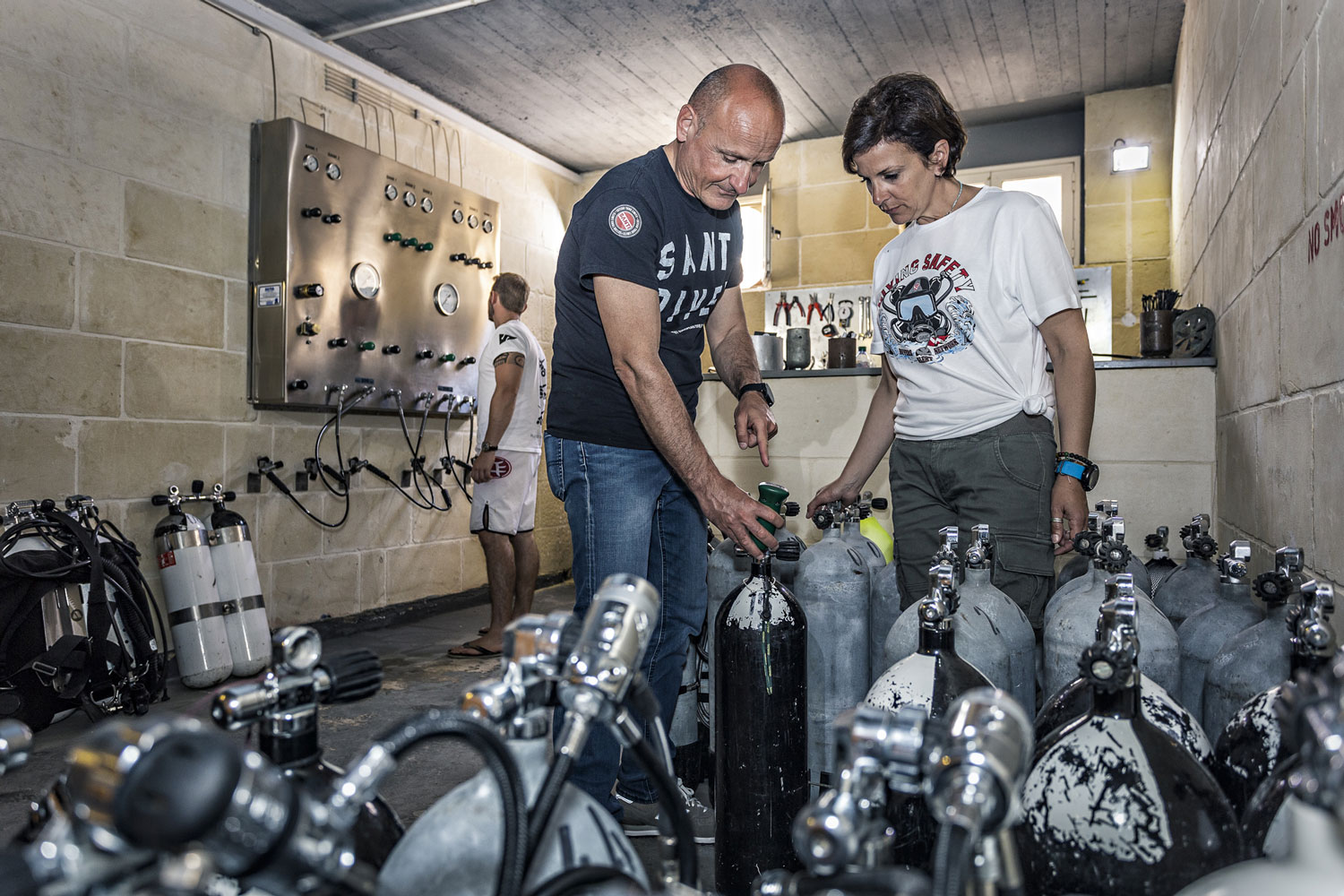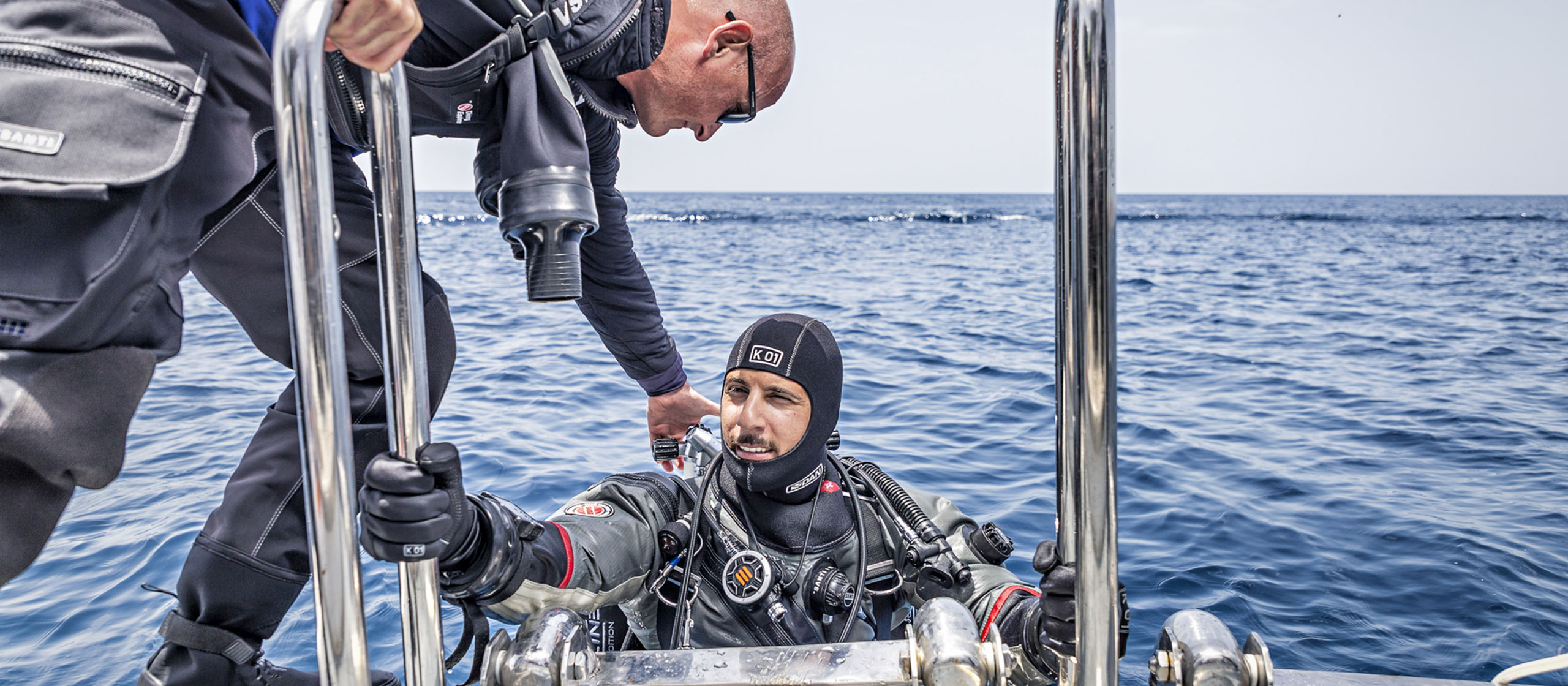Safety
The DAN HIRA Initiative: the promotion of a culture of safety at dive businesses
One more sliced finger from a dive ladder was the last straw for the DMO, called in to suture yet another significant dive-related injury. In his own way, he verbalised the urgent need for DAN to act and to create a program that could focus the attention of all parties invested in this industry to reduce unnecessary, avoidable and repeated accidents.
Based on the established principles of hazard identification and risk assessment (HIRA), the Divers Alert Network has been working on improving the safety and efficacy of recompression treatment facilities around the world since 1999: the DAN RCAPP or recompression chamber assistance & partnership program.
This DMO appeal for help was enough to convince us to set a new objective back in 2008, based on similar lines to the RCAPP: to make a real difference to dive safety through the creation and promotion of a culture of safety at all SCUBA diving schools, charters and operations around the world.
This article is an outline of what will hopefully be a series of discussions covering different operating aspects of the typical dive business and its interaction with its clients, the recreational SCUBA divers.
The rationale:
The primary mission of DAN is to offer assistance to injured recreational scuba divers. An important secondary mission is to prevent diving injuries. As part of a global campaign to reduce injuries and fatalities related to recreational scuba diving, DAN intends to fulfil its vision that “every dive be accident- and injury free” by identifying and mitigating risks associated with diving operations.
Primordial prevention of injuries or losses implies actively preventing an accident from happening, which in turn requires a program that generates awareness, control and ultimately mitigation of health and safety risks.
So how does one create, promote and then build such a preventive program? After much deliberation and engagement with our diving industry partners, the following overall objectives were formulated:
- To provide risk and safety awareness education to all participants.
- To offer guidance on risk mitigation and control, based on actual operational aspects of a business.
- To initiate and then grow participation by all diving service providers.
- To monitor accidents and incidents so that one can continually assess the status of progress towards our vision.
Achieving these objectives will require inclusion and co-operation at all levels, primarily through the empowerment of facilities to understand and then accept their responsibilities towards safety.

The process:
The extensive, 19-year experience DAN has with the RCAPP has clearly shown the value of a structured, methodical and consistent process. The DAN Risk Assessment Guide, available in multiple languages and used around the diving world, has played a key role in this endeavour.
This concept has now been extended to dive businesses with the development of a structured, documented process that mirrors the chamber risk assessment guide, and is referred to as the DAN HIRA Guide.
Firstly, it is important to note that DAN does not serve any regulatory role; we are not the SCUBA police; and we believe that our best way to influence things is through positive engagement with all affected parties. Secondly, the process starts with a detailed self-assessment utilizing a comprehensive manual which is shared on-line. We will only engage where specifically invited to by a dive business: it is crucial that there is complete buy-in and engagement on a voluntary basis.
This system proposes a realistic assessment of actual operational safety at the different areas of a dive business. The focus is on identifying the real risks present and not the fictitious or presumed or oft expected ones. We refer to this as identifying the possible hazards, followed by risk assessment.
We also try to provide resources for definitive measurements, so that the actual risk can be further measured: examples of this would be on-site environment noise and illumination measurements, as well as air quality testing.
Risk mitigation follows, which implies that the source of the risk be clearly identified and isolated, so that it can then be addressed.
Our usual approach to risk mitigation is to either eliminate this at source, using some form of technical or engineering control – like a barrier; or to provide instruction through policies or procedures to prevent any interaction with the risk – for example, teaching people how to use the ladder; or failing these, to provide physical protection – like supplying hearing protection to compressor workers.
As with any effective program, the process requires a form of monitoring or measurement to ensure the effectiveness of the measures, and to allow feedback to be applied to both risk assessment and mitigation steps, so that the dynamics of different situations can be accounted for.
This of course implies the involvement of all dive business staff, so that all parties can accept the risks, agree on possible mitigation strategies, and incorporate some form of monitoring system so that progress towards a culture of safety can be evaluated.
The tools:
There are two primary concepts used here.
Firstly, we need to ensure that we determine the key control points; the main sources of the hazards; so that we can be sure to address the root causes.
Secondly, not all risks are the same, and a measurement system helps to focus priorities of a business and to provide some degree of comfort in correctly understanding the importance of the issues.
The assessment tool used is encapsulated in an accepted definition of the term risk: The Probability that the Exposure to a Hazard will lead to negative Consequences.
Through this we can consider all the theoretical hazards, but then we set about assessing whether there is any likelihood that people or equipment could be exposed to these hazards, with some form of unacceptable damage. This turns the theory into practice: this allows us to identify the real issues over those that can be either dealt with at a later stage, and those that could even be disregarded.
The concepts of probability, exposure and consequence can all be quantified using a relatively easy-to-use, ① to ⑤ scales. The actual risk can thus be scored by multiplying these 3 scores by each other and referring to a typical risk score table.
|
Risk Score
|
Risk Level
|
Description
|
|---|---|---|
|
> 100
|
1
|
Extreme (danger)
|
|
50 – 100
|
2
|
Very high (stop use)
|
|
20 – 50
|
3
|
High (urgent attention)
|
|
5 – 20
|
4
|
Medium (attention needed)
|
|
< 5
|
5
|
Low (acceptable risk)
|
Existing regulatory documents:
Statutory and industry-regulating documents will vary, depending on national, local and industry-specific requirements, however, it is really important for all parties to know what applies to them, and what their relevant responsibilities are. Certainly knowing what is in the applicable documents is essential!
There are many additional documents which provide guidance, instruction and recommendations on gas cylinder valves, cylinder markings, medical gas cylinders, equipment testing and cylinder filling requirements.
How does the DAN HIRA process then work?
To achieve the best possible results, we are using an educational approach, where the dive centre manager or owner (or safety representative) is provided with the tools to understand the areas of risk and how to mitigate these risks. This is done through an incremental, online process, which consists of 3 levels. As one progresses through the levels, from 1 to 3, the safety related prerequisites increase, with the aim of making the diving business safer and more sustainable. The process is honour-based, and aimed at the actual operation: the day-to-day activities, covering the full scope of the business. The final stage, HIRA 3, provides the dive centre’s owner or manager with the comprehensive ‘Risk Assessment Guide’ which covered all operational areas. The final outcome is a comprehensive report that enable focussed efforts to address all relevant risks that apply to their dive operation.
We will detail out the typical operational areas in subsequent articles, illustrating the areas of concern and focus.
Industry standards are followed as the general guidelines, but the ultimate intention is for the DAN Risk Assessment Guide to become what all recreational divers should expect to see when selecting a safety-aware dive operator.
The self-assessment report can then be submitted to the business management for their review & acceptance, but more importantly, for their own use as a resource for addressing key issues.
So, what are these areas of interest?
We would like to discuss the various activities that typical dive businesses will include in their scope of operations in subsequent articles. However, to provide you with some ideas of what these might be, we have included them below.
- Staff Health & Safety,
- Client Health & Safety,
- Staff Training & Certification,
- Training Pool Area,
- Training Room,
- Dive Retail Shop,
- Diving Boat Operations,
- Liveaboards,
- Compressor & Tank Filling Area,
- Equipment Storage Area,
- Small Instrument Workshop,
- Vehicle Safety,
- Travel & Health Advice for Clients and lastly, but certainly available in some areas…
- Recompression chamber dives!

